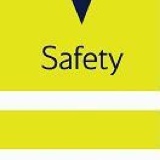Title Page
-
Standards Audit - Manual Tasks
-
Conducted on
-
Prepared by
-
Location
-
Personnel involved
Consultation
-
Where persons on site may be required to perform manual tasks, consultation shall occur on all aspects of manual tasks risk management.
As a minimum, consultation shall occur when:
a) Identifying manual tasks and their potential hazards;
b) Deciding on control measures to reduce exposure to hazardous manual tasks;
c) Reviewing the effectiveness of control measures, and
d) Changes which may impact on exposure to hazardous manual tasks are made to the workplace. -
Enter your findings, evidence reviewed and recommendations below
-
Select your judgment based on your findings
-
Enter any notes if you wish
Identify Manual Tasks
-
Each site shall identify, as far as practicable, any task which involves:
• Exertion of physical force (e.g. manual handling);
• Constrained postures (e.g. seated tasks), or
• Manual control of equipment and/or processes (e.g. driving a forklift). -
Enter your findings, evidence reviewed and recommendations below
-
Select your judgment based on your findings
-
Enter any notes if you wish
Identification of hazardous manual tasks
-
A manual task shall be identified as hazardous if it involves any of the following characteristics:
• Repetitive or sustained force;
• High or sudden force;
• Repetitive movement;
• Sustained and/or awkward posture; and
• Exposure to sustained vibration. -
Enter your findings, evidence reviewed and recommendations below
-
Select your judgment based on your findings
-
Enter any notes if you wish
Assessment of Risks
-
Identified hazardous manual tasks shall be assessed to determine the risk of musculoskeletal disorders associated with the task. As a minimum, the assessment shall identify the following for each identified hazardous task:
7.3.3.1. Direct risk factors
Risk factors that have a direct effect on the body, including:
• Actions and movements involved in performing the task (including repetition and speed);
• Postures and positions that must be taken by each person involved in the manual task;
• Duration and frequency of the manual tasks;
• Forces and loads involved; and
• Exposure to vibration.
7.3.3.2. Contributory risk factors
Risk factors that can make the task more difficult to perform, including:
• The working environment (e.g. poor lighting and cool temperatures);
• Systems of work, work organisation and work practices (e.g. deadlines, workloads, inadequate rest breaks);
• Skills and experience of each person who must perform the manual task; and
• Personal characteristics of each person who must perform the manual tasks (e.g. age, physical capabilities).
7.3.3.3. Sources of risk
For each identified risk factor, determine the source(s) of the risk, considering:
• Work area design and layout;
• The nature of loads;
• The nature of tools, machinery and equipment;
• Workplace environment;
• Work organisation, work practices or systems of work -
Enter your findings, evidence reviewed and recommendations below
-
Select your judgment based on your findings
-
Enter any notes if you wish
Frequency of Risk Assessments
-
As a minimum, risk assessments shall be undertaken:
a) Before work involving a manual task commences for the first time;
b) When a musculoskeletal disorder or hazardous manual task is reported;
c) When any change, redesign or alteration to:
a. structures,
b. the workplace,
c. items, or
d. systems of work,
used in performing manual tasks is proposed that may alter the risks of musculoskeletal disorders;
d) When new information becomes available; and
e) When requested by a Health and Safety Representative. -
Enter your findings, evidence reviewed and recommendations below
-
Select your judgment based on your findings
-
Enter any notes if you wish
Select Suitable Controls
-
The site shall control all identified manual task risks, as far as is practicable, in accordance with the preferred order of the hierarchy of controls detailed below:
7.4.1.1. Eliminate the task
Hazardous manual tasks shall be eliminated, where reasonably practicable.
7.4.1.2. Eliminate risks
The risk of injury from manual tasks shall be eliminated, where practicable
7.4.1.3. Isolate the hazard
Control measures shall be implemented, where practicable, which isolate potentially affected people from the hazardous manual task.
7.4.1.4. Minimise the risks
Control measures shall be implemented, where practicable, to minimise any remaining risk. -
Enter your findings, evidence reviewed and recommendations below
-
Select your judgment based on your findings
-
Enter any notes if you wish
Design / Procurement
-
As a minimum, risk assessments shall be undertaken:
a) Before work involving a manual task commences for the first time;
b) When a musculoskeletal disorder or hazardous manual task is reported;
c) When any change, redesign or alteration to:
a. structures,
b. the workplace,
c. items, or
d. systems of work,
used in performing manual tasks is proposed that may alter the risks of musculoskeletal disorders;
d) When new information becomes available; and
e) When requested by a Health and Safety Representative. -
Enter your findings, evidence reviewed and recommendations below
-
Select your judgment based on your findings
-
Enter any notes if you wish
Awareness Training
-
Where employees may be exposed to hazardous manual tasks, the site shall provide an appropriate manual tasks awareness training program.
7.4.3.1. Content of training program
The hazardous manual tasks awareness training program shall include, where applicable:
a) Hazardous manual tasks terminology;
b) Relevant regulations relating to manual tasks;
c) Risk factors and potential sources of risks associated with manual tasks;
d) Health effects and potential injuries associated with exposure to hazardous manual tasks;
e) The site’s identified hazardous manual tasks and control measures; and
f) The use or application of any relevant mechanical aids and control measures.
7.4.3.2. Training frequency
Employees shall receive training in hazardous manual tasks:
a) As part of their induction training process, and
b) Receive re-training as required, when competency can no longer be demonstrated. -
Enter your findings, evidence reviewed and recommendations below
-
Select your judgment based on your findings
-
Enter any notes if you wish
Task Specific Training
-
Where employees are required to undertake hazardous manual tasks, task specific training and instruction shall be provided.
7.4.4.1. Content of training
Task specific training and instruction shall include, where applicable:
a) Risk factors and potential sources of risks associated with the specific tasks;
b) Preparation of the workplace layout and environment to perform the task safely;
c) Preparation of the load;
d) Organisation of the task and work flow to minimise risk of injury;
e) Selection, use and adjustment of relevant mechanical aids and handling devices;
f) Selection, adjustment and use of relevant tools and equipment; and
g) Relevant safe work practices.
7.4.4.2. Training frequency
Employees shall receive task specific training:
a) As part of their induction training process;
b) Before a tasks is introduced or modified; and
c) Receive re-training as required, when competency can no longer be demonstrated. -
Enter your findings, evidence reviewed and recommendations below
-
Select your judgment based on your findings
-
Enter any notes if you wish
Physical Capability
-
Employees required to perform hazardous manual tasks must be assessed and monitored to be physically capable of performing the inherent requirements of the task.
7.4.5.1. Determining inherent requirements of the task
Inherent requirements of hazardous manual tasks shall be identified using the following process:
a) Breakdown task into essential and non-essential requirements;
b) Identify accurately the necessary skills and physical attributes required to safely perform the essential requirements of the task;
c) Determine the level of the identified physical attributes required to safely perform the essential requirements of the task;
d) Investigate whether there are any other ways the task can be designed or performed, so that people who do not have the physical attributes necessary to perform the current essential requirements may otherwise undertake the task;
e) Identify any medical tests which are relevant and appropriate for assessing the required physical attributes; and
f) Undertake any identified medical testing in accordance with CHH standard 02-17-01 Workplace health surveillance and monitoring.
7.4.5.2. Document inherent requirements
Identification and assessment of inherent requirements for hazardous manual tasks shall be documented and retained in accordance with standard 02-20-01 Records Management.
7.4.5.3. Selection of capable personnel
To the best of CHH’s knowledge, personnel shall be selected to undertake hazardous manual tasks who are physically capable of meeting the inherent requirements of the task. -
Enter your findings, evidence reviewed and recommendations below
-
Select your judgment based on your findings
-
Enter any notes if you wish
Evaluate Controls
-
Risk control measures shall be evaluated to verify that:
a) They have been implemented;
b) They continue to work to eliminate or minimise the risk of injury so far as is reasonably practicable;
c) There is continued physical capacity to safely perform the tasks; and
d) They do not result in new hazardous manual tasks or other hazards. -
Enter your findings, evidence reviewed and recommendations below
-
Select your judgment based on your findings
-
Enter any notes if you wish
Frequency of Review
-
A review of the effectiveness of the control measures shall be conducted:
• After the initial implementation of risk control measures;
• Before making alterations to objects or systems of work involving hazardous manual handling e.g. changing the place where that task is undertaken;
• If new information comes to light about hazardous manual handling being associated with a task;
• If the employer becomes aware of additional information about hazardous manual handling being associated with a task;
• If an incident occurs;
• If risk control measures do not adequately control the risks; and/or
• If requested by a Health and Safety Representative. -
Enter your findings, evidence reviewed and recommendations below
-
Select your judgment based on your findings
-
Enter any notes if you wish
Records
-
As a minimum, the following records relating to hazardous manual tasks shall be documented and retained in accordance with standard 02-20-01 Records Management:
• Hazard Identification and risk assessment reports;
• Required control measures;
• Identified inherent requirements, and
• Training records. -
Enter your findings, evidence reviewed and recommendations below
-
Select your judgment based on your findings
-
Enter any notes if you wish











